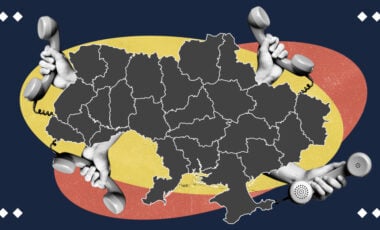EU approves €50 billion aid package for Ukraine

The European Council has backed the plan under the Ukraine Facility program to provide Ukraine with record economic assistance from the EU — €50 billion over four years.
European Council President Charles Michel announced that the EU countries had achieved an agreement.
According to unofficial information from journalists, there will be a review of the aid plan after two years, during which Hungary will not have veto rights.
Moreover, €39 billion of these funds are expected to be used for direct financial support, with Ukraine receiving €18 billion this year.
He noted this will ensure "stable, long-term, and predictable financing" for Ukraine.
"We have a deal. All 27 [EU] leaders agreed on an additional €50 billion support package for Ukraine within the EU budget.," the statement said.
We have a deal. #Unity
All 27 leaders agreed on an additional €50 billion support package for Ukraine within the EU budget.
This locks in steadfast, long-term, predictable funding for #Ukraine.
EU is taking leadership & responsibility in support for Ukraine; we know what is…
— Charles Michel (@CharlesMichel) February 1, 2024
In turn, European Commission President Ursula von der Leyen noted that providing funding to Ukraine was one of her department's priorities. She also stressed that, among other things, this made February 1 a great day for Europe.
"Agreement! The European Council delivered on our priorities. Supporting Ukraine," von der Leyen said. "A good day for Europe."
Agreement!
The European Council delivered on our priorities.
Supporting Ukraine.
Fighting illegal migration.
Supporting European competitiveness.
A good day for Europe.
— Ursula von der Leyen (@vonderleyen) February 1, 2024
Meanwhile, Prime Minister Denys Shmyhal noted a significant portion of the EU-provided funds will go to the state budget "and will help finance the budget deficit." He said another program component involves creating a special investment instrument to cover risks in priority sectors.
"It will allow attracting additional funds for investments," the head of government explained.
Assistance to Ukraine will be provided for four years until 2027. Money will be allocated both in the form of loans and grants.
However, the EU won't just hand out money — its receipt is tied to Ukraine implementing a series of reforms. These are precisely the reforms outlined in the supported Ukraine Facility plan by the European Council.
They are expected to address public administration and management of state finances, judicial system, fighting corruption and money laundering, financial markets, management of state assets, human capital and business environment, regional policy and decentralization, energy sector, green transition, and environmental protection, transport, agri-food sector, and digital transformation.
The European Commission will monitor compliance with the approved plan every three months. If Ukraine fulfills what is planned, the EU will provide aid tranches. If not, funding will not be provided.
However, Ukraine itself declares a clear intention to adhere to reform paths — as early as the end of 2023, the Cabinet of Ministers approved a draft plan under the Ukraine Facility program. "Together with business, civil society, the parliamentary corps, and regions, we have done a tremendous job in creating it," Prime Minister Denys Shmyhal said.
What will the 50 billion from the EU go towards?
Meanwhile, according to the Ministry of Economy, the final regulation of assistance to Ukraine must be adopted by the European Parliament at a plenary session scheduled for February 26-29, 2024. The ministry expects to receive the first payment of €4.5 billion in March.
As the Ministry of Finance noted, the funds received under the plan are intended to support the state budget and implement country recovery projects.
"The program will complement existing support tools for Ukraine. Such as budget guarantees, financial instruments, and other financing for private sector development," they said.
The program involves a special investment instrument to cover risks in priority sectors, the volume of which will be €8 billion. Financing within this instrument will be available to investors through the EBRD, EIB, and other international institutions. It is expected that the implementation of projects within this instrument will attract an additional €30 billion in investments.
"The Ukraine Facility program's budget provides a separate direction of technical support. In particular, funds to cover interest on loans under the Ukraine Facility will amount to €3 billion," the Ministry of Economy explained.
What we know about the 50 billion for Ukraine
The European Commission proposed increasing the EU's joint budget by €66 billion to cover expenses over the next four years, part of which should go to financial support for Ukraine in the amount of €50 billion.
On October 17 last year, the European Parliament supported the initiative, which envisages the creation of the Ukraine Facility — a new financial instrument for Ukraine with funding of up to €50 billion for the period from 2024 to 2027.
At the EU summit, Hungarian Prime Minister Orban spoiled the moment of celebration for Kyiv — and pleased the Kremlin — by vetoing the four-year package of financial assistance.
Hungary previously stated that it could lift its veto on the 50 billion aid package on the condition that the funding would be reviewed annually. And, according to media reports, the European Commission is ready to accept some of Budapest's demands.
The question of assistance to Ukraine will be considered at a separate EU summit at the beginning of February. To approve the agreement on providing a €50 billion aid package to Ukraine for 2024-2027, EU member states are considering the possibility of depriving Hungary of its voting rights.





















































